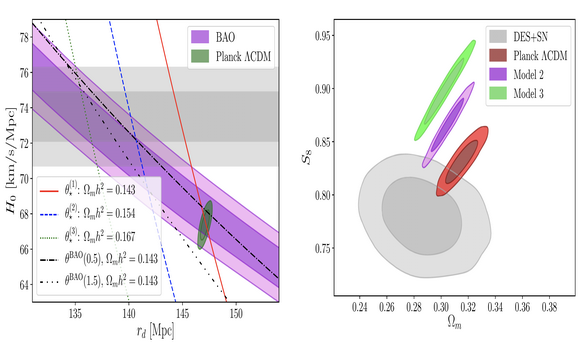New cosmological studies shed light on the Hubble tension
Observations discovered that in the framework of ΛCDM, which is the widely accepted standard cosmological paradime, different kinds of probes yielded different measurements of H0, the expansion rate of the Universe at the current epoch, and the level of the inconsistency is around 5 sigma. This enigma, often referred to as the Hubble tension, implies new physics beyond ΛCDM and thus has been one of the key problems in modern cosmology yet to be tackled.
Prof. Gong-Bo Zhao from National Astronomical Observatories of CAS (NAOC) together with his international collaborators including Prof. Levon Pogosian, a CAS PIFI visiting scientist from Simon Fraser University, has made a crucial step forward towards solving the problem of 'the Hubble tension'. This study has been recently published online on Nature's Communications Physics, on June 8, 2021.
Zhao and his international collaborators used data from various sources including the eBOSS survey, the largest galaxy survey in the world, performed a thorough study for solutions to the Hubble crisis, and provided a clear path towards solving this big problem.
"This study opens a new window for probing new physics, based on stage-IV surveys including DESI, PFS and CSST, in the next few years," said Prof. Gong-Bo Zhao, the corresponding author of this paper.
This work is supported by CAS, NSFC and MOST.
This paper can be accessed at https://www.nature.com/articles/s42005-021-00628-x

Figure: Constraints on cosmological parameters including H0, derived from new observations including the eBOSS survey, in different cosmological models. (Credit: Jedamzik, Pogosian & Zhao)